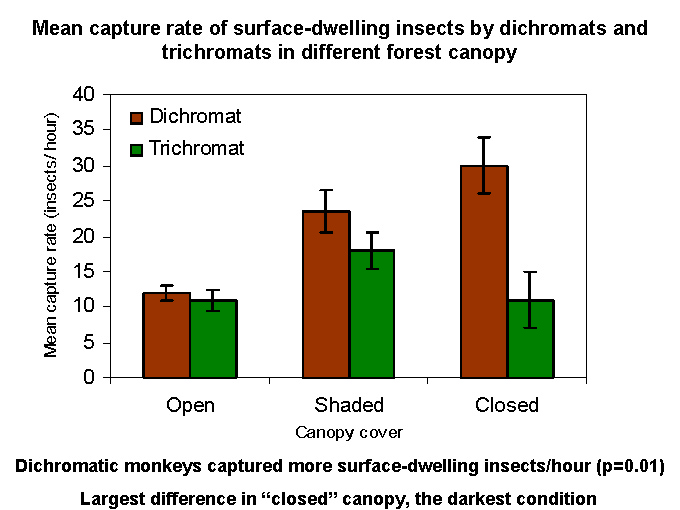Melin, A. D., Fedigan, L. M., Hiramatsu, C., Sendall, C. and Kawamura, S. (2007). Effects of colour vision phenotype on insect capture by a free-ranging
population of white-faced capuchins (Cebus
capucinus). Animal Behaviour, 73 (1): 205-214. ScienceNOW Daily News, 9 January 2007. DISCOVER, 2 April 2007.

We evaluated whether dichromatic capuchin monkeys (Cebus capucinus) were more efficient than trichromatic monkeys at capturing camouflaged
and non-camouflaged insects. Through fecal DNA analysis, we determined
the genotypes of the M/LWS opsins for 34 capuchins in two groups inhabiting
Santa Rosa National Park, Costa Rica. Dichromatic monkeys were more efficient
at detecting camouflaged, surface-dwelling insects, especially under conditions
of low ambient light. However, unexpectedly, trichromats were more efficient
in extracting embedded, non-camouflaged, insects from substrates. To our
knowledge, this is the first study to document a foraging advantage to
dichromatic monkeys in the wild. Our findings show that there is a lack
of heterozygote advantage in foraging for surface-dwelling insects and
therefore indicate this mechanism may not be the sole driving force maintaining
polymorphic colour vision in this population.

